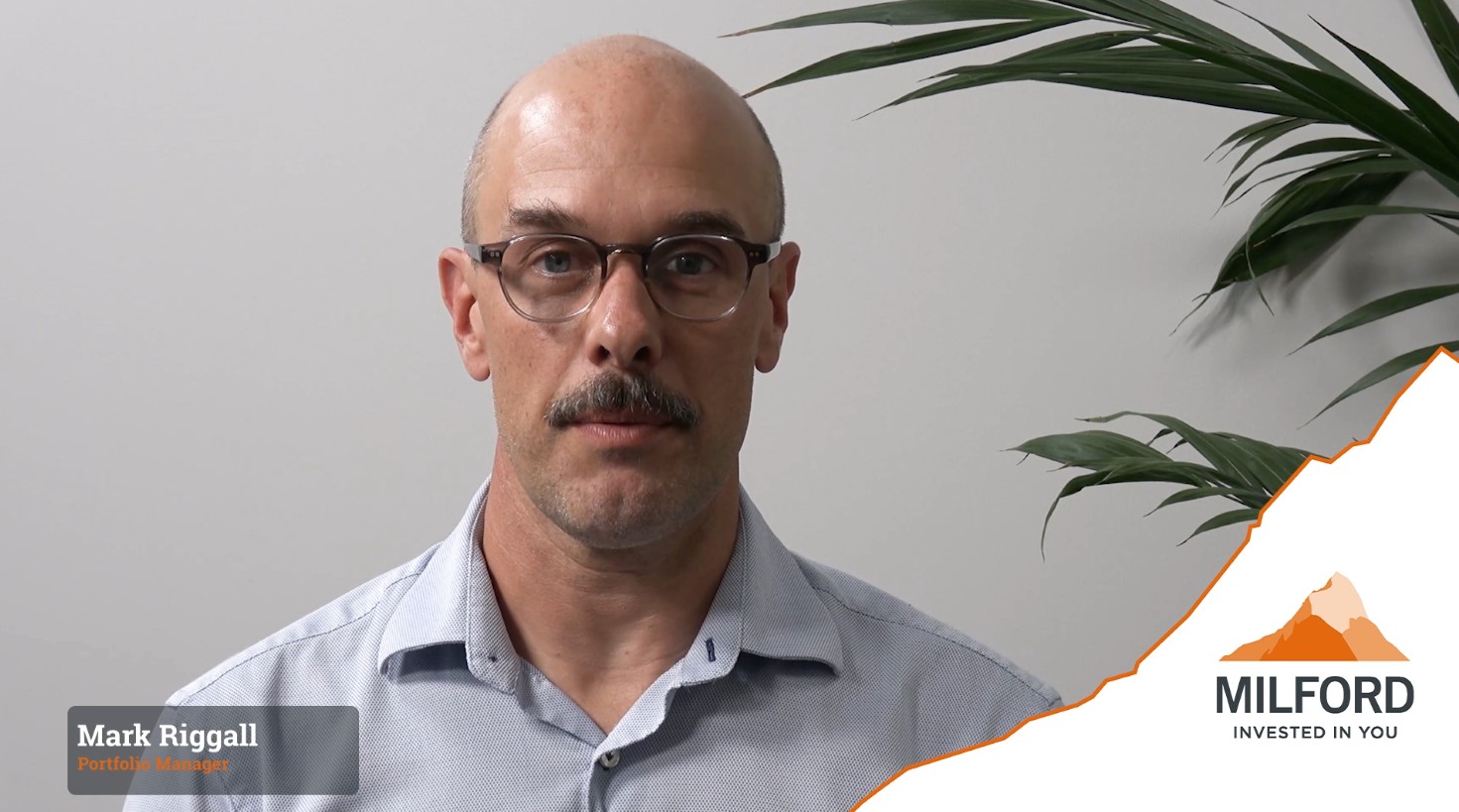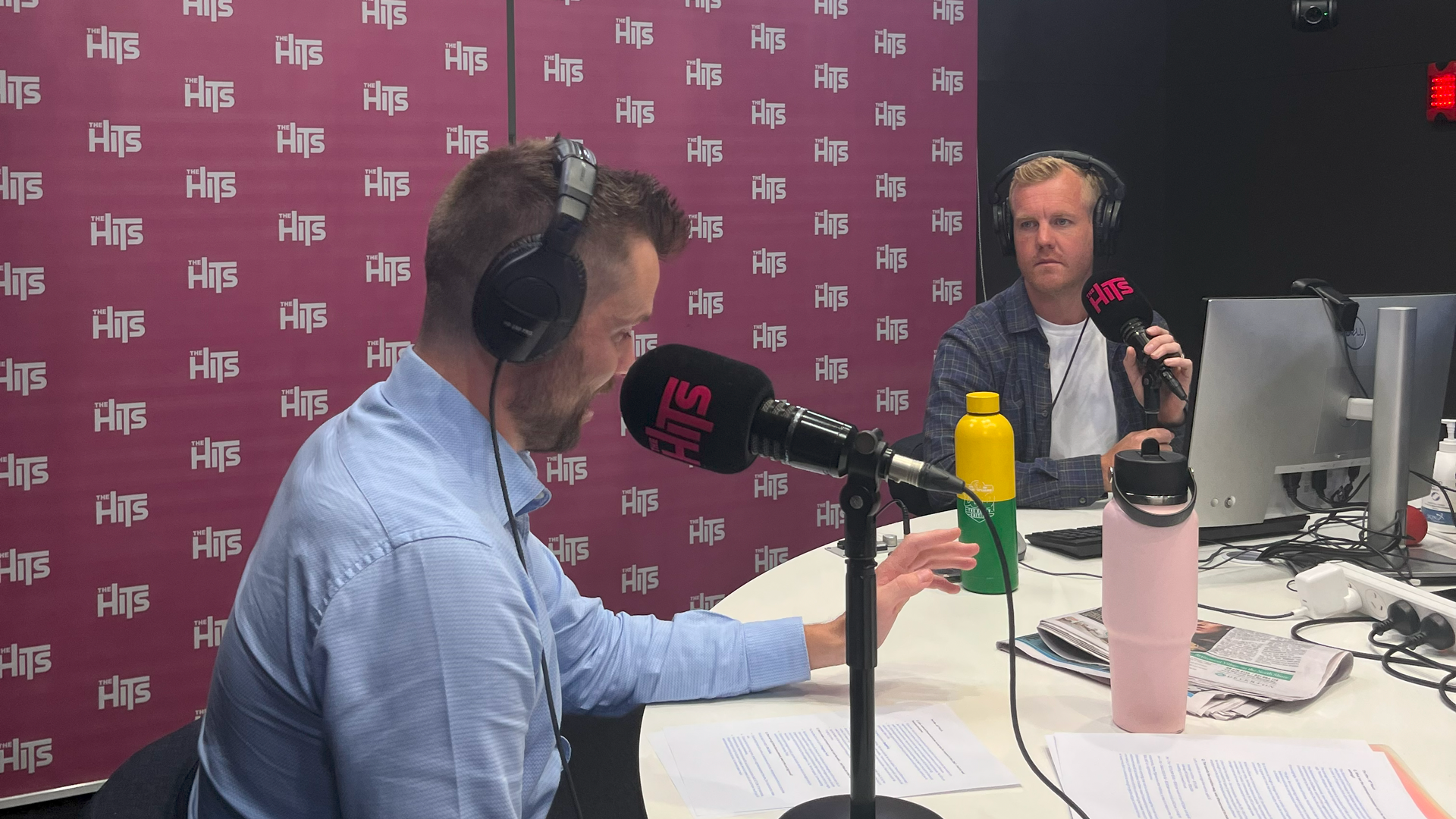Interest rates, AI, property, gold, Trump and tariffs. Investors have a lot to consider in this volatile geopolitical landscape. Ryan Bridge discusses these ‘frequently-asked-about topics’ with Milford Financial Adviser Bruce O’Leary, including investment strategies to mitigate risk.
Click here to download the MP3 file or listen to the podcast on your favourite platform:
Bridge talks Business: 21 October 2025
Episode Transcript
Ryan Bridge
Kia ora and welcome to episode 53 of Bridge talks Business with Milford. Great to have your company. Is an AI bubble about to burst? How long will gold’s winning streak continue, and why are investors turning to more defensive stock options? These are the questions that keep wealth fund managers on their toes. Chances are, if we’re talking about them in the media, they’ve already read in, been there, come up with strategies to mitigate the risk. And that is the topic for today’s podcast. We’ll look at that shortly.
First, here’s your top five business bits.
1. A volatile week for stocks with Trump’s China tariff threats. By the end of the week, though, he’s walked back the more aggressive rhetoric and share markets have recovered much of their losses.
2. Bankruptcies in the private credit space last week sparked concerns around bank lending practices. It appears the situation was isolated and contained. There’s minimal risk to the broader financial sector.
3. Across the Tasman, employment data last week surprised with a weaker reading, as the unemployment rate hit four and a half percent – the highest level since 2021. This likely overstates the weakness though. The Australian economy looks to be on solid footing based on a whole range of indications.
4. At home, quarter three inflation here hit 3% in line with expectations. Domestic inflation has slowed, tradable imported has slowed, thanks to a fall in the Kiwi dollar. Odds are on for another rate cut from the Reserve Bank next month.
5. This week we get the delayed US inflation data. This is for September, which will be closely watched for signs of further tariff-driven inflation there. Plus investors watching quarterly company earnings reports very closely.
Alright, let’s get stuck straight into it this week. Just a reminder the segment is informational only and should not be considered financial advice. I’m happy to have back on the podcast for a second time Bruce O’Leary, who’s a Financial Adviser with Milford. Bruce, welcome back to the podcast. Good to see you.
Bruce O’Leary
Thanks, Ryan. Good to be here.
Ryan Bridge
Long time no see, but lots to talk about today. And just remind our viewers of the types of customers that you are advising.
Bruce O’Leary
Yeah. So we go through a full advice process with all of our clients that I talk to. And it’s a real range of clients, from people for who there is a liquidity event which triggers the clients to come here to see us. But it’s a range of clients from your retirees who simply need to fund a retirement income on a monthly basis, and we’ve got people that are building funds for the next generation. And, also, we’ve got big charitable trusts and things like that, who need to deliver for the beneficiaries of those trusts.
Ryan Bridge
Right. I’ve got lots to ask you about today, so we’ll crack into it. Term deposits are something that are raised with you often at the moment. What exactly are people wanting to know?
Bruce O’Leary
Well, particularly high demand at the moment, because there’s a lot of term deposits maturing. So there wass a huge amount of money put into term deposits in the last two or three years. I think the stats are somewhere between 100 million, went up to 150, 160 billion on term deposit in New Zealand over that period of time.
Ryan Bridge
That’s post Covid, right?
Bruce O’Leary
Post Covid and even subsequent to that, more like post ‘20, ‘22, ‘23. So there was a real rapid increase because interest rates went up, central banks had to kill off inflation. What was their one tool? They raised interest rates from virtually at 0 to 5.5%. That flowed into term deposit rates in New Zealand on a one and two-year view of about 6.1, 6.2%.
A lot of those are maturing now and people are getting 3.5% now at best. So what was your goal for putting that money there? Getting a low risk 6.2% is a pretty attractive return. Now you’re getting a low risk 3.5%. So if your goal is, this is low risk money that I know I need to spend in a few months’ time or next year, then that’s probably still the correct place for it. But if your goal is to build for retirement or the next generation, you’re probably not going to earn a 6% type return out of term deposits in the next little while. I know last week you had one of my colleagues on talking about where interest rates are going to go, and they’re not likely to go up in the near term in New Zealand.
Ryan Bridge
No, if anything, they’re going down. Maybe even two more times. Hey, big elephant in the room is this bubble question. So we had the JP Morgan boss come out and say he’s a little concerned about this. Bank of England has come out and said something similar. Is this a real AI bubble that we’re talking about?
Bruce O’Leary
I think you do have to differentiate between the AI stocks and the non-AI stocks as well. So I think it’s not clear-cut that it’s a bubble. We are on the cusp of a real technological transition in the world. I think should markets be at highs at the moment? Well sort of why not? Because the US economy, if you think about it, it’s at a $30 trillion GDP size now. If you go back five years, it was $20 trillion. So there’s been phenomenal growth in the size of the economy. So there’s no reason why markets shouldn’t be at highs. People shouldn’t fear markets being at highs. But it often triggers a lot of commentators to predict the next crash.
And you know, economists are well known for predicting way more recessions than actually eventuate. And so that does tend to grab headlines at times. Putting the AI to one side, and let’s talk about AI. There’s definitely some elements of froth and some valuations both in an unlisted and listed sense. There’s a lot of circular transactions going on with some of these companies investing in each other, to then buy their own products back and that kind of thing. But what if we are at the start of a real technological wave, which produces productivity growth in the US and around the world. That will mean a growth in earnings, a growth in economic growth around the world. It’ll mean higher returns for potentially investors, because these companies should be able to grow their margins and get more productivity out of every employee that they have on their books.
Ryan Bridge
And in which case, some of these companies could be massively undervalued right now.
Bruce O’Leary
Yeah. And look, don’t get me wrong, there’s going to be a lot of winners and losers and the numbers are eye watering. These companies are spending hundreds of billions of dollars, building and developing their own generative AI tools. And they’re hundreds of billions of dollars on CapEx. And not all of those will generate an adequate return on that.
Ryan Bridge
Is it normal, because you talk about the stocks going up and we should be happy, but we start to freak out a little bit. If something’s too good for too long, then it’s human nature to panic a bit isn’t it?
Bruce O’Leary
Yeah. And it’s also too good, and you also get a lot of other headlines around at the same time. But not all of those are relevant to the markets as well. Jamie Dimon, he’s been quoted to me by a number of clients in the last few weeks. But I actually forwarded one of my clients an article from Jamie Dimon from January 2024 virtually saying the same kind of thing. And the S&P is up significantly since then. So he has a job to do. He’s running the biggest American bank. He has to talk with an element of caution. And Milford operates with a fair element of caution as well.
Ryan Bridge
Yeah. Right. Defensive stocks. The Wall Street Journal was talking about – I hate to quote another news media report, but that’s the business I’m in – Wall Street Journals was talking about defensive stocks this month for the first time since 2022. Defensive stocks will lead the S&P 500. What does it tell us about where investors heads are at?
Bruce O’Leary
Yeah. So there is an element of caution coming from some parts of the market. And we’ve had a slight wobble in the US market earlier this month when Donald Trump came out with his 100% tariffs on China. Yeah, that caused a 3% fall in the market on that night. But I put defensive stocks into a couple of camps, though, because utilities were obviously historically viewed as very defensive and they still are, but they are also viewed as growth companies to a certain extent, these days. You know, these artificial intelligence data centre have massive power requirements. So there is growth and development and expenditure on electricity and power. And so some of these utility companies are benefiting hugely from that as well.
Ryan Bridge
That’s fascinating isn’t it. Because defensive stocks are the must haves – the staples. You know staples in the supermarket, that kind of stuff. Groceries.
Bruce O’Leary
That’s right.
Ryan Bridge
Right. Property. What is the chatter, you know, amongst your clients, prospective clients around property – because prices certainly haven’t been going up, been going either down or flat. And projections are not actually that great for the capital side of it. So do you need a massive yield. What’s the situation?
Bruce O’Leary
Look, a lot of our clients are the baby boomer generation, because they are the ones who’ve accrued savings over a longer period of time. And if you think back to 1987, when the New Zealand share market had a pretty major crash, a lot of our clients got burned at that time and they stepped away from investing in shares for quite a long, long time. And so what do they invest in? They invested in property and bank deposits. And don’t get me wrong, property has been a massive generator of wealth here in New Zealand. Property prices have been incredibly strong. But if you look at the last few years, property has sort of struggled with capital growth. So we get a lot of clients who are actually thinking about what to do with their residential property in particular.
The yields are not particularly attractive, particularly once you take away the costs and the maintenance costs and these sort of things. So, you have the hassle of looking after your tenants. And a lot of the rights of tenants have grown over the last few years.
Ryan Bridge
And the healthy home standard.
Bruce O’Leary
Correct, there’s a whole bunch of stuff which makes it just more difficult than it used to be a residential property landlord. So a lot of our clients are questioning whether they want to continue holding. It does really require capital growth in order to get an appropriate return, not just yield.
Ryan Bridge
So do I take all my money out of property and go throw it in gold. Because I’m watching the gold price Bruce, and I’m thinking 50. What is – up 50?
Bruce O’Leary
50% this year.
Ryan Bridge
So does that mean that I’ve likely missed the boat? It’s already gone up and it got as high as it goes. Or does it just keep going?
Bruce O’Leary
Well, it is hard to know, because unlike when we buy a company where we can put a value on a company, we try and forecast future cash flows for a company. A company in a normal world will grow its earnings most years because the economy’s growing. It’ll pay a dividend, it’ll pay us back some of those cash flows.
So our analysts here at Milford are trying to predict the cash flows for the next five and ten years of a company, put a value on it, and then we can decide whether we want to buy it or not. Gold is very hard to do that with. Should it be worth $4,000 right now? Should it be worth $3,000 right now?
There’s no doubt about it. It’s causing a lot of questions from our client base. I did a presentation late last week. It was one of the first questions, you know, what’s Milford doing about gold? And we are investing in gold stocks, predominantly in Australia, but also in the US. And those gold stocks have served our portfolios incredibly well this year because they generate a lot of cash flow as the gold price has gone up. But gold performance this year has been quite unusual, which is why it has grabbed a lot of headlines. You’ve had central banks buying gold at the same time as investors. Now not all of these investors are just conservative investors. There will be some momentum traders and some speculative investment chasing into gold price, for sure. So it’s very hard to say whether four thousand is going to five.
What we would say is, you know, historically gold’s been used as a store of value during volatile times. As an inflation hedge, and as a diversifier. So when we buy gold stocks in the portfolio, we are thinking about it in that context.
Ryan Bridge
Right. So we’ve got term deposits coming off, we’ve got property not looking so great, but then we’ve got gold and we’ve got record highs on the stock market. A whole bunch of stuff going on. What’s the underlying strategy to make sure that you have a successful investment portfolio?
Bruce O’Leary
And I think diversification is the key here. And I also think discipline as an investor. You do have to step back and avoid some of this noise. And the internet does take you down a sort of rabbit hole with the algorithms, depending on what you’re searching for. If you search for a crash, of course you’re going to come up with a lot of negative stories out there.
Yeah, there’s always headwinds for the market decline. They talk about it being the wall of worry that markets always have to climb, and that doesn’t change. It gets elevated at times and goes away at times. I mean, you know, the last few weeks have been a classic example of if you sort of jumped at shadows and thought, oh, Donald Trump is going to put 100% tariffs on China, you know, US is going to go into recession.
You sort of sell the market on Friday. And by Sunday he’s already walked that talk back. So I think what we sort of say to our clients is try to ignore the noise, we’re going to put together for you a diversified portfolio. We’re not just exposed to AI, we’re not just exposed to gold. We’re not just exposed to New Zealand. We’re exposed to a lot of different geographies, a lot of different sectors. And these sectors and geographies are going to behave differently in a changing environment. Different markets like the UK are going to react – those stocks are significantly cheaper than a lot of the comparables in other parts of the world. They’re going to react differently to certain announcements out of the US than what a US stock might, or what a New Zealand stock might.
Ryan Bridge
Bruce, always good to get your wise words of wisdom. Thanks so much for coming on the show again.
Bruce O’Leary
Thanks, Ryan.
Ryan Bridge
That was Bruce O’Leary, Financial Adviser here with Milford. And just a reminder you can like follow subscribe this podcast wherever you like to listen. Share it with your friends. Email it to them. Do whatever you like. We love you listening and I will see you next week. Until then, don’t forget. Invest in yourselves.
Missed previous episode? Don’t worry! Click here to catch up now.


